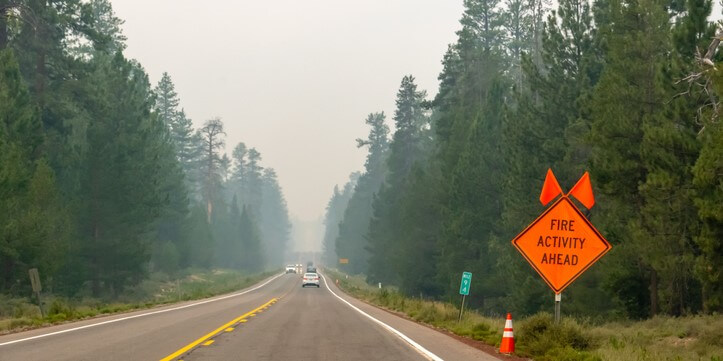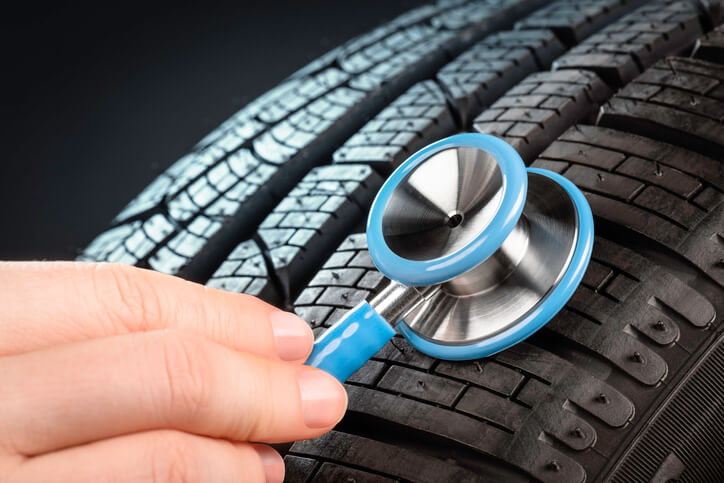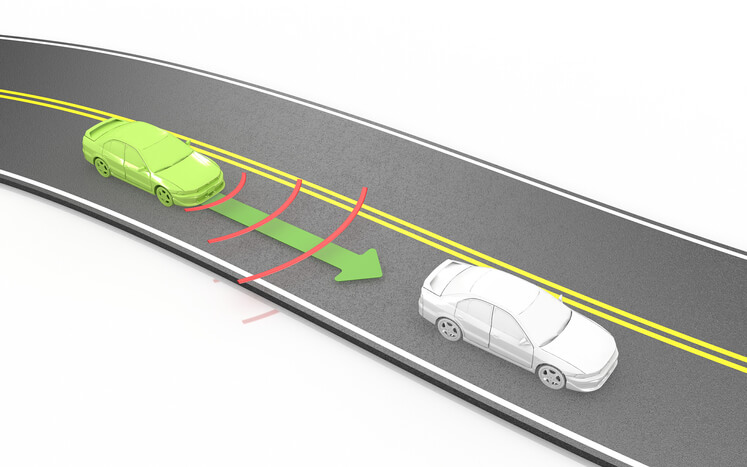Unless you drive an electric vehicle, your car can be a thirsty animal. Because it’s made up of metal parts that produce enormous amounts of friction and heat, it needs to stay lubricated. If you don’t check and change the fluids in your car regularly, big problems can occur.
It’s fine to rely on vehicle gauges to give you warnings, but often when a light goes on, there’s already a problem. It’s better to know which fluids do what and how to check them so you can prevent trouble from happening in the first place.
Here are six fluids to check in your car to help you avoid problems down the road:
1. Oil
Gasoline, or fuel, makes your car go, but the most important fluid after that, which keeps your car going, is oil. Engine parts whirl and spin and rotate fast, causing friction and heat. The entire premise of a combustion engine relies on gas mixing with air and a spark igniting small explosions. This happens thousands of times a minute. Metal is tough, but even the strongest elements need something to help keep them from becoming brittle. Oil is that something.
The way to check your oil is pretty simple. Most cars have a dipstick in the engine compartment. The location of the dipstick will vary. If you can’t find it, check your owner’s manual. Make sure your engine is cool. A reading can be deceiving if the engine is hot.
First, pull the dipstick out and wipe it clean with a towel or rag. Make sure this is something you don’t care about. Oil is messy. Put the dipstick back into the place you pulled it from. Pull it out again and read the oil level. The dipstick will have two markings on it. The first says minimum or min, and the second maximum or max. This shows how much oil is in your engine.
You want the oil level to be close to maximum. It’s best to not go over this point. If your oil level is close to minimum, you need to add more immediately. It’s important to read your owner’s manual to find out what type of oil the manufacturer recommends for your car.
How much oil you have isn’t the only important part of checking this fluid. The condition of the oil is critical. You’ll have to touch it, so keep that rag handy. You want your oil to be translucent, a yellow or amber color. If it’s dark or black in color and extra thick, then it’s time to change the oil. Don’t simply keep adding more. There’s a filter that needs changing and all oil needs to be drained and replaced. There are plenty of shops that specialize in oil changes.
Of course, if your oil light on your dashboard comes on, you might already be in need. Don’t wait this long! Use the benchmark of between 3,000-5,000 miles of driving between oil changes if you’re unsure.
2. Coolant
Since even a well-lubricated engine will produce a large amount of heat, cooling is another critical part of the maintenance process. Just like when you exercise and need to hydrate, your vehicle needs to stay hydrated as well. If it doesn’t stay cool, it can overheat, causing a lot of potentially expensive damage.
Coolant isn’t just water, but a combination of water and antifreeze. Usually, cars like a 50/50 mix of these, but if you’re in a more extreme cold climate, you’d put in more coolant to avoid water freezing in your radiator.
The coolant travels around your engine, transferring heat and returning it to the radiator. It acts like blood in the body. Without the right coolant levels, your car’s engine could seize and stop working.
You only have to check coolant about every 50,000 miles. However, if you see steam rising out from under your hood or the temperature gauge gets into the red area, pull over immediately. Do not keep driving under any circumstance.
Never check the coolant while the engine is hot. Because liquid expands when it’s hot, the coolant will explode out of the radiator and could burn you if you release the radiator cover at the wrong time. Lightly put your hand on the engine. If it’s not hot to the touch, you’re safe to check.
If your car has a reservoir tank, check that first. If there is coolant, there and it’s between the minimum and maximum level indicator then you should be in good shape. If it isn’t, then remove the radiator cap and check there. You should be able to see coolant at the very top. If you don’t, you need to add some.
Before you add coolant, make sure you know what type of coolant is already in your engine. Combining different coolants isn’t a good idea. Poor the coolant/water mixture in slowly. Give it time to settle into the radiator. Air bubbles need to release before you replace the radiator cap.
3. Power Steering Fluid
You might not think about power steering fluid or think it’s that important, but you will when you don’t have it. If you’ve ever driven a car without power steering, you know what a work-out that is. Most modern cars have power or power-assisted steering. It’s operated by a motor, which, you guessed it, like the other motors in your car, needs fluid.
A hydraulic pump pressurizes power steering fluid. The engine powers that pump and helps move your car more easily. Remember, that’s thousands of pounds you’re steering around! When your power steering goes out, you’ll know it.
It’s best to check the power steering fluid before it gets to this point. Chances are you aren’t carrying any spare fluid around with you, so getting to a mechanic will be more challenging. There really isn’t a set timeframe in which to check the power steering fluid. Make sure you do it periodically.
Like the radiator, some power steering pumps have a reservoir you can check first. Others will have dipsticks. Make sure the level is at the maximum level. If it’s not, you should top it off. Power steering fluid is also vehicle specific. Do not just put any power steering fluid into any car. Check your owner’s manual, or go online, to see what specific fluid is right for your car.
If you have to keep adding fluid or your steering wheel is making a strange noise when you turn it on, there’s a good chance you have a leak in a hose. Take the car to a mechanic to address any issues.
4. Brake Fluid
When it comes to safety, brake fluid is the most important fluid in your car. A lot of modern brakes are hydraulic. This means that after the driver steps on the brakes, pressurized brake fluid transfers force to the pads and shoes. These squeeze the rotors and stop your wheels from rotating.
If you have a leak in your brake lines, or air has gotten into them, your brakes won’t operate properly. Your ability to stop will be compromised, putting yourself, your passengers, and others outside your car at risk.
Most cars have a brake fluid reservoir where you can check the levels. As with other fluids, there will be a minimum and maximum fill line. You should have enough brake fluid that you’re close to the maximum line. If you are low, you should top it off.
Double-check which brake fluid is right for your particular vehicle. Brake fluid comes in different varieties and is different colors. It should be easy to determine which one your car uses. Regardless of what color it is, all brake fluid should look translucent. If yours is dark and cloudy or you cannot see through it, then it’s time to get it replaced.
5. Transmission Fluid
The transmission that shifts your gears, whether manual or automatic, requires transmission fluid. There are several moving parts in a transmission. There are gears, clutches, and valves. These all need to operate smoothly in order for it to help power your car. Of course, that means they need lubrication.
It’s unusual to have to replace or check transmission fluid. For a newer car, this isn’t something you’ll generally need to think about. However, if you’re driving an older car, there may be reasons to get it looked at.
Transmission fluid is the consistency of oil but a dark red color. There generally isn’t a dipstick or other way to check on the levels. If yours does, you can utilize it. Make sure the car is running. Put the transmission in Park or Neutral for a clean reading. If it’s low, you can always top it off as with your other fluids.
However, if you’re having difficulty shifting, or the shifts aren’t smooth, or you’re hearing strange noises while the car shifts, then head to a mechanic. Transmissions are complex and not easy to work on. A professional will be able to troubleshoot your issues and get you back on the road.
6. Windshield Wiper Fluid
It may not be a crucial fluid, but windshield wiper fluid is most important when you don’t have it. Certainly, your car can operate without it, but having a clean windshield does improve your driving ability. We’re distracted enough as drivers these days. Add bugs or dust or mud to the windshield and your job just got a lot harder.
Maintaining your windshield wiper fluid is the easiest part of this list to handle. You can buy a bottle of it from an auto parts or grocery store. It’s usually premixed, but some might come as a concentrate. Follow the directions carefully and add whatever water you need.
In the engine bay you’ll have a wiper fluid reservoir, not unlike the others discussed on this list. Pour the fluid into the reservoir and replace the cap so it doesn’t spill while you’re driving.
Other fluids to be aware of
There can be other fluids in your car, but these we’ve mentioned are the most common. Of course, gasoline is the most important. Gasoline can turn bad. You don’t want gas to sit in your tank for more than a month. If you know, it’s going to, put in a gas treatment from an auto parts store to help prevent the gas from going bad and corroding the gas tank.
If you have a diesel truck, you’ll need to check your exhaust or DEF fluid. This helps reduce the amount of air pollution that can be caused by diesel engines. Check the owner’s manual for where to refill and how often.
The least likely scenario is that you have a car with a manual transmission. If you do, you’ll need to check your clutch fluid. This is often right near the brake fluid reservoir and like the brakes, fluid in the reservoir should be filled to the max level line and should be clear. If it’s black, it’s time to change it.
Cars can definitely take a lot of work, but the more you do small things to care for it, the more miles of adventure you can put on it.
Lyn Woodward is a writer and video host reviewing new sheet metal. Driver’s Ed was the easiest A she ever earned. She's the proud owner/mechanic of a 1966 Datsun Fairlady Roadster and 1987 Mitsubishi Montero. Her superpower is parallel parking and folding fitted sheets. Before writing about cars, she wrote three made-for-television movies.

















